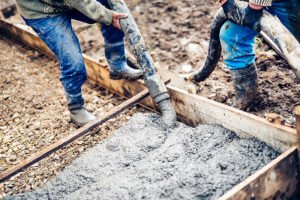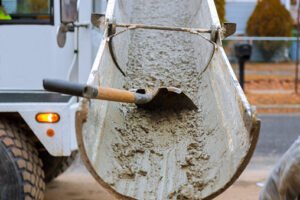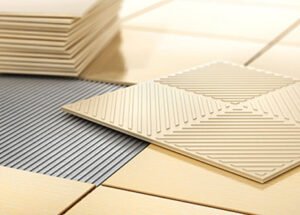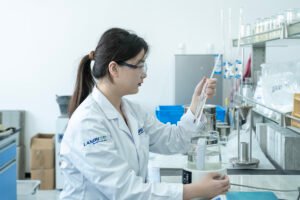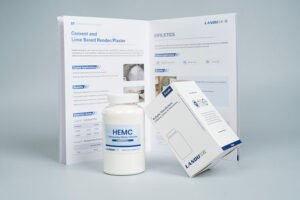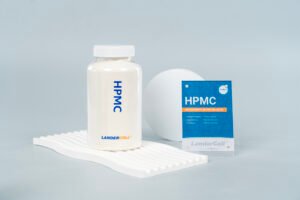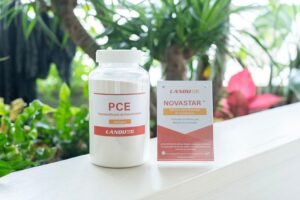
In the world of tiling, success hinges on the unseen layer: the tile adhesive. This high-performance mixture, meticulously formulated from cement, graded aggregates, water-retaining agents like Hydroxypropyl Methylcellulose (HPMC), and redispersible polymer powders (RDP), is the critical link between your tiles and the substrate. When mixed with water, it transforms into a workable paste that profoundly enhances bond strength, ensuring durable installations for walls and floors, both indoors and out.
While factors like ultimate strength and flexibility are vital, one performance metric stands out: open time. Understanding and managing this crucial window is often the difference between a perfect, long-lasting tile job and one plagued by failures. This comprehensive guide will delve deep into what tile adhesive open time is, why it's non-negotiable for quality, and the proven strategies to extend it for superior results.
Understanding Open Time
Tile adhesive open time is defined as the maximum period after the adhesive has been applied (typically with a notched trowel) to a substrate during which tiles can be laid and still achieve full bond strength. Think of it as a stopwatch that starts the moment the thin bed of adhesive is spread.
Within this window, the adhesive maintains the ideal balance of wetness, tackiness, and workability. Once this time elapses, a critical point is reached. The adhesive begins to skin over or cure on the surface, losing its ability to form a complete, intimate bond with the back of the tile. For a standard thin-set adhesive, this open time is typically 20-30 minutes, but it is highly variable.

A Practical Example
If your adhesive has a stated open time of 20 minutes, you must embed the tile into the mortar bed within that 20-minute window from the moment you trowel that specific section. Exceeding this time forces you to scrape off the old adhesive and re-apply fresh material, as the initial application will no longer provide a reliable bond.
Environmental conditions act as a multiplier on this stopwatch. In hot, dry, or windy weather, the rate of moisture evaporation from the adhesive accelerates dramatically, potentially slashing the open time by 50% or more. Conversely, in cool, humid conditions, evaporation slows, and the open time may be extended.
Why Open Time is Critical
Installation Efficiency and Precision
A sufficient open time gives the installer the flexibility to work on larger areas, adjust tile positioning for perfect alignment, and ensure proper lippage control without feeling rushed. This is especially critical with large-format tiles (LFT), which require more time for precise placement.
Final Bond Integrity and Longevity
When a tile is laid within the open time, the adhesive is fluid enough to be pressed into a uniform, continuous bed, maximizing the contact area and creating what's known as "full coverage." This is essential for a strong mechanical bond. If the adhesive has skinned over, it creates a weak barrier.
- Incomplete Bonding: Hollow spots behind the tiles.
- Reduced Shear Strength: Tiles are more prone to dislodge under stress.
- Long-Term Failure: Over time, these weakly bonded tiles can loosen, crack, or detach entirely, especially under thermal or structural movement.


Key Factors Influencing Tile Adhesive Open Time
Several interconnected factors dictate how long your adhesive remains workable:
Raw Materials
The quality of key components like HPMC and RDP directly impacts open time. High-quality HPMC retains moisture, slowing evaporation, while RDP enhances flexibility and adhesion.
Temperature
Higher temperatures accelerate drying, while lower temps extend open time by slowing down evaporation and curing.
Humidity
Low humidity accelerates moisture loss, reducing open time, whereas high humidity slows evaporation.
Airflow
Strong airflow increases evaporation, shortening open time and potentially harming adhesive performance.
Substrate
Porous or warm substrates can quickly absorb moisture, cutting open time short even when environmental conditions are favorable.
Chemical Formula
The adhesive’s formulation determines baseline open time. Proper balance of ingredients ensures optimal performance.
Proven Strategies: How to Extend Tile Adhesive Open Time
Extending open time is not about magic tricks; it's about smart material selection and jobsite management.
High-Performance Additives
For formulators and professional installers seeking the best performance, upgrading the adhesive's chemistry is the most effective method.
Redispersible Polymer Powder (RDP):
- Role: RDP significantly improves the adhesive's consistency, making it smoother and more workable. This "buttery" quality gives installers more time to maneuver tiles.
- Benefit for Open Time: The polymers enhance the adhesive's internal cohesion and water-retention capabilities, working with HPMC to create a more robust system that resists premature drying.
- Product Recommendation: LANDU ACCURATE RDP is engineered specifically for high-performance tile adhesives. It offers excellent bonding strength and flexibility, making it ideal for demanding applications with dense, low-porosity tiles like porcelain and natural stone.
Hydroxypropyl Methyl Cellulose (HPMC):
- Role: HPMC is the primary guardian against water loss. It acts as a thickener and a water reservoir within the mix.
- Benefit for Open Time: By dramatically slowing the evaporation rate, HPMC is the single most important component for maintaining a long, consistent open time, even in moderately challenging conditions. It ensures the adhesive remains tacky and workable.
- Product Recommendation: LANDU LANDERCOLL HPMC is a top-tier cellulose ether that supports C1 and C2 grade tile adhesive formulations. It provides an excellent balance of flowability, water retention, and strong bonding properties, ensuring a durable and long-lasting installation.
Jobsite Adjustments - Hot or Dry Conditions
Even with the best materials, environmental control is key when working in hot or dry conditions:
- Mix Smaller Batches: Only mix the amount of adhesive you can use within 20-30 minutes.
- Work in Smaller Sections: Trowel adhesive onto an area you are confident you can tile within the shortened open time.
- Control the Environment: Use fans, air conditioning, or temporary screens to block direct sunlight and wind. Pre-cooling the mixing water can also help.
- Condition the Substrate: Lightly dampen highly porous substrates (like concrete block or screed) before application to reduce its suction. Crucial: The substrate must be damp, not wet—standing water will weaken the bond.
Cold Weather Adjustments
In cold weather, open time naturally extends, but other issues can arise. Use the following strategies to manage:
- Use Tempered Water: For mixing, ensure the water is at the correct temperature to avoid chilling the mixture.
- Maintain Temperature: Ensure the ambient temperature remains above 5°C (41°F) to prevent freezing and allow proper curing.
Post-Installation Care
Proper post-installation care is crucial for the adhesive to develop its full strength:
- In Hot Weather: Protect the fresh installation from direct sunlight and wind to prevent the adhesive from drying too quickly, which can cause shrinkage cracks.
- In Cold Weather: Keep the area heated to ensure the cement hydration process continues uninterrupted.

